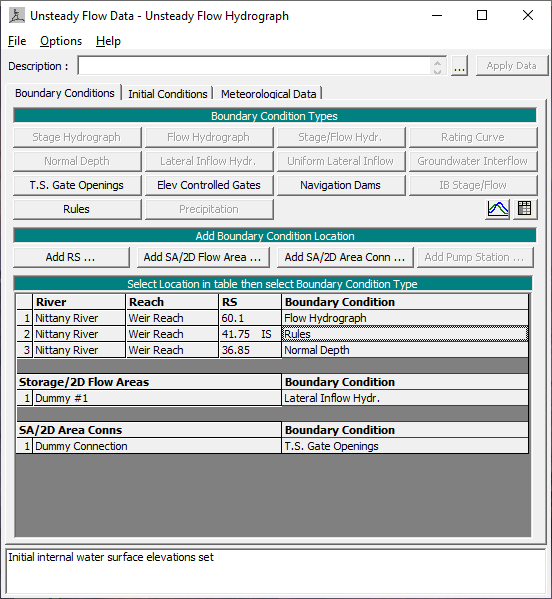The operating procedures for determining and controlling the releases from reservoirs and other types of hydraulic structures can be quite complex. HEC-RAS allows flexibility in modeling and controlling the operations of hydraulic structures through the use of rules (Figure 14-40).

Figure 14 40. Selecting Rules from the Unsteady Flow Data Editor
The rules can be used to operate the height of the gate openings. Alternately, the rules can directly control (or constrain) the flow despite the gate openings (or even without gates at all). Examples of variables that could be used to control releases from a hydraulic structure are: current flows and water surfaces at the structure, current flows and stages at downstream or upstream cross section locations, time considerations (winter, morning, etc), and/or previously computed values (accumulated outflows, running averages, etc). These variables can be combined with math operations and conditional operations to produce sophisticated controls. Rule operations in HEC-RAS are available for inline hydraulic structures, lateral hydraulic structures, and storage area connections.
The rules can also be used at pumping stations. The basic operation for pumping stations, such as the water surface at which a pump turns on, is entered on the geometry editor. Rules can be used to modify these operations, for instance by setting a maximum pump flow. Or the rules can entirely replace the geometry based operations by specifying when and how the pumps turn on and off.